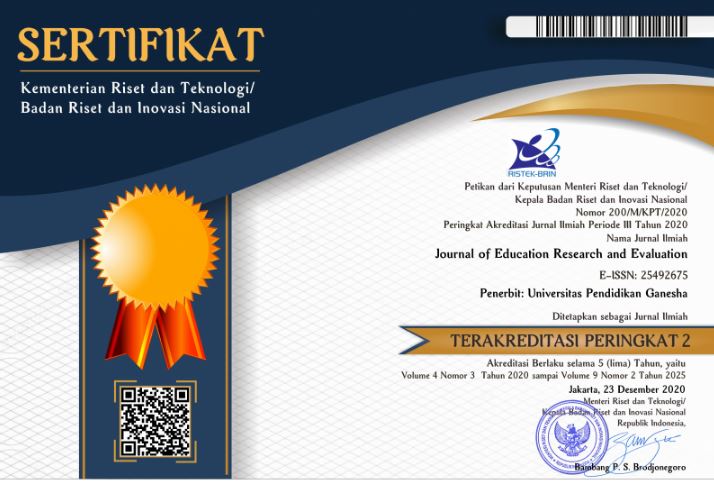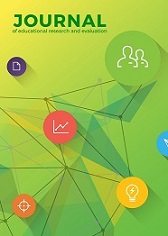Asesmen Otentik sebagai Pendukung Desain Instruksional Jaringan Komputer Berstrategi Blended-Learning dengan Pendekatan Konstruktivistik
DOI:
https://doi.org/10.23887/jere.v1i2.10072Keywords:
Authentic assessment, Blanded learning, Constructivism, Computer NetworkingAbstract
This study aimed to develop instructional design of computer network courses packed with blanded learning strategy, and presented with constructivist approach of subak concept. The method used in this research is the method of research and development (R & D) using the Instructional Development Models (MPI) steps that adapt the Dick & Carey model. Each Chapter, equipped with an evaluation packed with authentic assessment. The authentic assessments used include: performance assessments, essays, products and portfolios. Based on the analysis of needs and instructional that has been done can be concluded that according to the syllabus used, there are 11 Chapter with twenty-three special instructional purposes computer network lecture material that can be analogy in subak concept. Three chapters have not been successfully analysed: internet protocol material, internetworking and naming protocol and directori.References
Callison, Daniel. 2009. “Authentic Assessment” dalam American Assosiation of School Librarians. http:- //www.ala.org/ala/mgrps/divs/aa sl/aaslpubsandjournals/slmrb/ editorschoiceb/ infopower/ selctcallison85.cfm, diakses 3 Oktober 2009.
Margaret driscoll, saul carliner. Advanced web-based training strategies:unlocking instructionality sound online learning (San Fransisco: freiffer,2011).
Gredler, Margaret E.,Learning and Instruction Theory into Practice, sixth Edition, Pearson Ltd, New Jersey, 2009.
Kesiman & Agustini, The Implementation of Hypertext-based Learning Media for Local Cultural Based Learning, Journal of Information Technology Education : Innovation in Practice,Vol. 11,2012
Khaerudin. 2009. Pengaruh Kemandirian Belajar dan Motivasi Belajar Terhadap Prestasi Belajar Matematika. Skripsi. FKIP UMS (tidak diterbitkan)
Marhaeni, A.A., Istri. 2007. Pembelajaran Inovatif dan Asesmen Otentik dalam Rangka Menciptakan Pembelajaran yang Efektif Dan Produktif. http://pasca.undiksha.ac.id/e-learning/staff/images/img_info/4/lt_10-282.pdf (Diakses tanggal 2 Januari 2017)
Patsy Moskal, Charles Dziuban, Joel Hartman. Blended learning: A dangerous idea?, The Internet and Higher Education Journal, Volume 18, July 2014.
Popham, W.J.(1995). Classroom Assessment, What Teachers Need to Know. Boston : Allyn and Bacon.
Rosenberg,M.J.,et al. Occupation and Value. Free Press, Glencoe, 1982.
Suparman, Atwi., Desain Instruksional Modern, Penerbit Erlangga, 2012.
Thorne, Kaye. Blended Learning: How to integrate online and traditional learning. London : Kagan Page, 2010
Downloads
Published
How to Cite
Issue
Section
License
Authors who publish with the Journal of Evaluation and Research in Education (JERE) agree to the following terms:
- Authors retain copyright and grant the journal the right of first publication with the work simultaneously licensed under a Creative Commons Attribution License (CC BY-SA 4.0) that allows others to share the work with an acknowledgment of the work's authorship and initial publication in this journal.
- Authors are able to enter into separate, additional contractual arrangements for the non-exclusive distribution of the journal's published version of the work (e.g., post it to an institutional repository or publish it in a book), with an acknowledgment of its initial publication in this journal.
- Authors are permitted and encouraged to post their work online (e.g., in institutional repositories or on their website) prior to and during the submission process, as it can lead to productive exchanges, as well as earlier and greater citation of published work. (See The Effect of Open Access)










